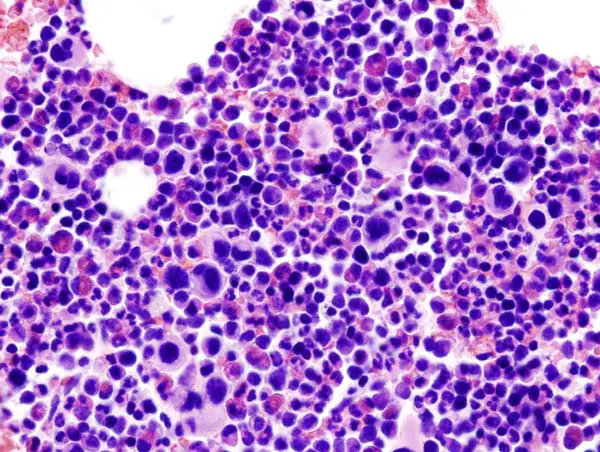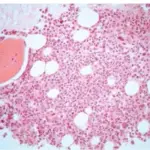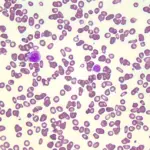Essential thrombocythemia is a blood disorder in which the bone marrow produces too many platelets.
What is the Pathology of Essential Thrombocythemia?
The pathology of essential thrombocythemia is:
-Etiology: The cause of essential thrombocythemia is acquiring (not inheriting) a somatic mutation in any of several genes, such as the JAK2 gene (most frequent), CALR gene, and rarely the MPL, THPO, or TET2 gene.
-Genes involved: JAK2 gene, CALR gene, MPL gene.
-Pathogenesis: The sequence of events that lead to essential thrombocythemia stem from the driver JAK2, CALR and MPL genes which when mutated cause myeloproliferative effects.
-Histology: The histology associated with essential thrombocythemia shows an increase in bone marrow cellularity with megarkaryocytic hyperplasia.
How does Essential Thrombocythemia Present?
Patients with essential thrombocythemia typically are women, middle aged or over age 60, though younger people can develop it too. The symptoms, features, and clinical findings associated with essential thrombocythemia include headache, dizziness, chest pain, fainting, temporary vision changes, numbness or tingling of the hands and feet, redness, throbbing and burning pain in the hands and feet depending on where the clot forms (often in the brain, hands and feet).
How is Essential Thrombocythemia Diagnosed?
Essential thrombocythemia is diagnosed by a platelet count of ≥450 × 109/L , bone marrow biopsy showing megakaryocyte lineage with increased numbers of enlarged, mature megakaryocytes with no significant increase in neutrophil granulopoiesis or erythropoiesis and, rarely, minor reticulin fibers, not meeting WHO criteria for CML, polycythemia vera (PV), primary myelofibrosis, myelodysplastic syndromes, or other myeloid neoplasms, and presence of JAK2, CALR or MPL mutation.
How is Essential Thrombocythemia Treated?
Essential thrombocythemia is treated by prescription drugs such as hydroxyurea, anagrelide, interferon alfa-2b or peginterferon alfa-2a perhaps along with low-dose aspirin to reduce platelet count. Plateletpheresis is also used during emergencies.
What is the Prognosis of Essential Thrombocythemia?
The prognosis of essential thrombocythemia is good. The life expectancy of patients with essential thrombocythemia is nearly that of the healthy population. Median survival is approximately 20 years. For patients younger than age 60 years, median survival is 33 years.



